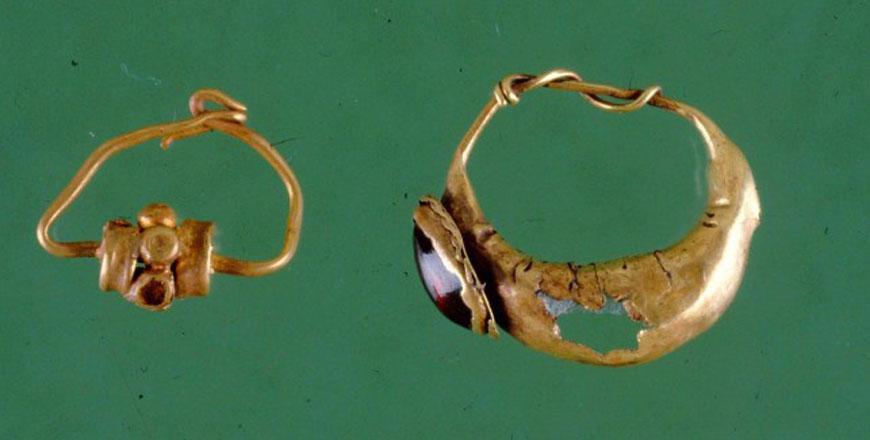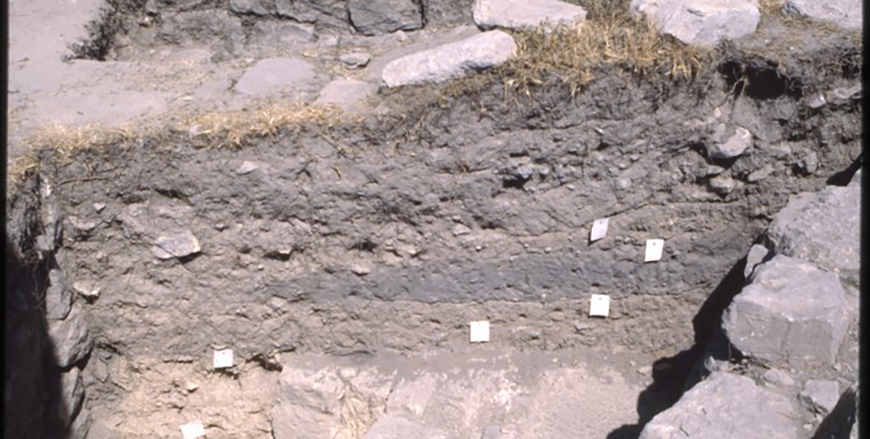You are here
From Madaba map to Saint Lot Monastery: Tracing Byzantine heritage, Nabataean influences
By Saeb Rawashdeh - Jan 22,2024 - Last updated at Jan 22,2024

St. Lot Church from the Byzantine period located in Ghor Safi (Photo courtesy of ACOR)
AMMAN — The Dead Sea region has been inhabited since prehistoric times, with thousands of graves dating back to the Neolithic and Bronze Age scattered throughout the southern Ghor.
During an archaeological survey in 1986, the research team found remains of an ancient site near the spring Ain Abata, located in Ghor Safi. Very soon it was established that these ruins belonged to the Saint Lot monastery, near the biblical city of Zoara/Ghor Safi, since it shared the same geographic location as the church depicted on the 6th century AD mosaic floor map at Saint George Church of Madaba.
“Biblical scholars and archaeologists interested in identifying the 150 places portrayed on the Madaba map have been searching for this site since decades,” noted the Greek archaeologist Konstantinos Politis, adding that within a year of the discovery and identification of Deir ‘Ain ‘Abata (from Arabic: The Monastery of the Abbot’s Spring), an international team of archaeologists was assembled to excavate and study the site.
It was a joint effort by the British Museum (London), the Jordanian and Greek governments, as well as from private sources, Politis added, highlighting that the site is located on a steep mountain slope 3km southeast of the Dead Sea shore.
The team found an abundance of architectural stones, metal and glasswork, mosaic cubes and pottery sherds amongst the ruins. The initial goal was to start the rescue excavation and prevent further deterioration of the site due to erosion and the expansion of the Safi village.
Researchers discovered animal and botanic remains at the site which indicated that animals were used for food while some were cart animals, like horses and donkeys.
The botanical finds include olives, dates, bitter vetch, grapes, apricots, lentils, barley, bread wheat and cucumbers and/or melons.
“These results revealed that the community living at Deir ‘Ain ‘Abata had a relatively rich diet of domestic and wild species of plants, animals and fish, some of which were imported, at considerable expense, from as far as the Mediterranean and the Red Sea,” Politis highlighted, noting that the ceramic finds from Deir ‘Ain ‘Abata included moulded oil lamps, cooking pots with lids, drinking cups, inscribed store jars, bowls, pitchers, pilgrim flasks, lanterns and fine plates.
Politis added: “Of particular importance were several hundred green and brown glazed sherds that, after chemical and technological analyses, proved to be an incidental soda wood ash glaze on a stone-type ware.”
This represents a new type of pottery in the early Byzantine period (5th-7th centuries AD) of the Levant and sheds light on the technique of glazed pottery of all periods. Other finds typical of the early Byzantine period included marble bowls, glass vessels, hanging oil lamps, copper and iron implements, painted plaster and some 3000 copper alloy numei coins, including two coin hoards.
The archaeological team also found Greek inscriptions invoking Saint Lot to bless Sozomenou, Ulpious and a third indistinguishable name.
“The inscriptions were written by three monks who were probably living in the site,” Politis speculated “And this was the first decisive piece of evidence indicating Lot’s association with Deir ‘Ain ‘Abata”.
The building that represented a church was particularly well preserved against the eastern mountainside where it still stands to a height above the cornice where the vaulted roof began.
The complete excavation and planning of five distinguishable layers of tumbled architectural stones enabled an accurate reconstruction of the church that was dated for April 605/607 according to the Greek inscription.
“Two further mosaic floors were uncovered, which were probably of the same early 7th century AD date. One is just inside the cave entrance and consisted of multicoloured mosaic cubes randomly arranged to resemble the natural conglomerate rock of the cave. The second lies in the chancel of the church and is decorated with typical early Christian/Byzantine motifs such as birds, a lamb and a peacock, all surrounded by grape vines,” highlighted Politis.
“Finally, the 691 AD date of the church’s renovation is significant because it is well into the period of the Umayyad Dynasty’s rule-in the Levant [636-750 AD]. Their policy of religious tolerance and collaboration is therefore confirmed at Deir ‘Ain ‘Abata,” Politis underscored.
These are evidence of vibrant Christian communities existing during the first decades of Umayyad reign, such as those at Mefa‘a/Um arRasas and Mt Nebo.
“The nave’s mosaic floor has one of the most free-flowing floral designs known in the Levant and surrounds an inscription. Its long sprawling branches tipped with large orange-coloured leaves are reminiscent of the painted decorations on Nabataean fine ware pottery,” Politis explained. He believes that there is a direct continuity between the Nabataean, Roman, Byzantine and early Islamic art. According to him, it would not be surprising if this mosaic was influenced in this way, since the site is relatively close to Petra.
“This theory would concur with the horned capital, ‘dogtooth’ designs on other stones, moulded oil lamps and characteristic thin-bodied fine wares distinctive of Nabataean material culture that were found at Deir ‘Ain ‘Abata,” Politis said, adding that unfortunately, the nave mosaic has suffered serious damage as approximately a quarter of its length has eroded down the mountain after the western front of the church collapsed.
Related Articles
AMMAN — Inscriptions found in Yemen and Oman dating back to the Nabataean period point to the prevalence of frankincense trade between south
AMMAN — During his long and successful career, Greek archaeologist Konstantinos Politis studied the southern Ghor and the site Deir ‘Ain ‘Ab
AMMAN — Gharandal was a significant site during the Byzantine and early Islam period and pottery was assembled from the site during the 1997



















